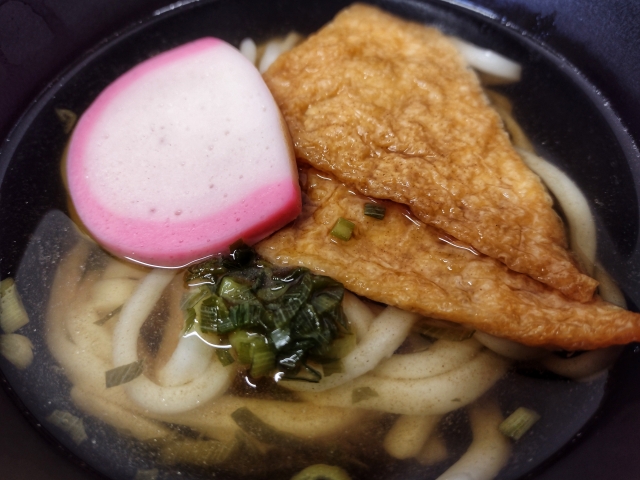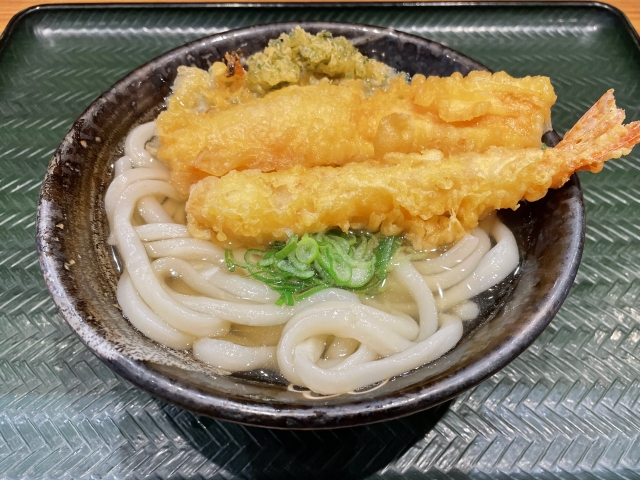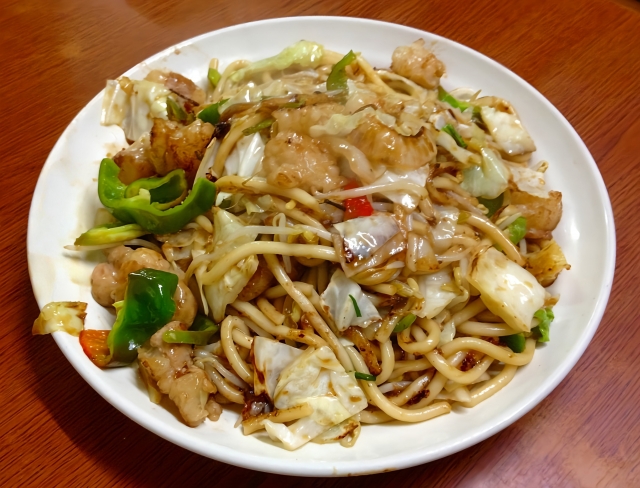Harmony on the Plate
Top Photo: kscz58ynk on PhotoAC
As a foreigner and an Assistant Language Teacher in Japan, there are few things more heartwarming than receiving letters from students. These missives offer a glimpse into their lives, experiences, and cultural traditions.
Recently, I had the pleasure of receiving letters from my students introducing me to the delightful world of Japanese New Year meals, particularly the significance of soba and mochi.
One common theme that emerged from these letters was the celebration of the Japanese New Year and the unique meals associated with this festive season. Soba, a type of thin noodle made from buckwheat flour, and mochi, a sticky rice cake, were prominent in the students’ descriptions.
The letters not only introduced me to the flavors of soba and mochi but also offered insights into the cultural values embedded in these culinary traditions. The emphasis on longevity, unity, and hard work mirrors the broader Japanese cultural ethos, providing a profound understanding of the interconnectedness between food and societal values.
Soba often enjoyed on New Year’s Eve, holds a symbolic significance in Japanese culture. The long and thin nature of the noodles is believed to represent longevity and resilience. Students shared stories of families coming together to prepare and enjoy a warm bowl of soba, fostering a sense of unity and continuity as they bid farewell to the old year and welcomed the new.
Mochi, a chewy rice cake, takes center stage in various New Year’s celebrations. The meticulous process of pounding rice to create mochi emphasizes the value of hard work and unity within families. Students recounted the joy of participating in mochitsuki (mochi pounding events) with their relatives, a tradition that bridges generations and strengthens family bonds.
On the last day of the second semester in December, My JTE surprised me with a small, elegantly wrapped package. My excitement was palpable as I eagerly unwrapped the gift. To my delight, I discovered a beautiful bowl and a package of soba noodles inside.
Receiving the bowl of soba from my Japanese teacher filled me with a sense of excitement and gratitude. The thoughtful gesture went beyond a simple gift; it was a bridge connecting our shared experiences in the classroom to a broader cultural context. It was also more than a culinary delight; it was a symbolic wish for longevity and prosperity in the coming year. As I held the bowl in my hands, I couldn’t help but feel a deep appreciation for the effort and consideration that went into this traditional farewell.
As I reflected on these gestures, I couldn’t help but marvel at the depth of cultural expression and richness embedded in the culinary traditions surrounding the Japanese New Year.
Photo Credits:
Top Photo: kscz58ynk on PhotoAC
All other content (text) created by the original author and © 2024 MUSUBI by Borderlink
Welcome again to Best of MUSUBI, where we revisit articles from the past and breath new life into them with updated information and photos!
Feeling the food blues? No worries, check out some of the healthiest goodies from Japan!
We all struggle with health and fitness, and it can become a chore thinking about what to eat and integrate into one’s health routine. But no worries here, because Japan is often heralded as one of the healthiest nations, and the answers can often be found in the food! Here’s three Japanese foods that are great additions to our daily diet!
Miso Soup
Firstl, there’s miso. In recent years it has caught on more outside Japan, so you may be familiar with it already.
Many Japanese people like to drink miso soup with their meals, and it’s no wonder because it’s tasty and provides a nice, cozy touch to any breakfast, lunch or dinner!
Miso is fermented soya bean paste. It is high in protein and can help boost your immunity. It can also decrease cholesterol levels and aid in digestion, making it a fine addition to any meal plan!
Natto
Then, there is the famous (or infamous) Natto! Despite its reputation, natto is worth trying and making a regular part of your diet if you can manage it. But just why is natto so good for you?
Although the texture can be an acquired taste to some, it is high in protein, vitamin B, fiber, iron and other important nutrients.
Natto can actually provide great nutrition to the skin and hair too! So next time you need a healthy summer glow, get some natto!
Green Tea
Thirdly, have you tried green tea? Green tea is a common beverage in Japan, and is often served hot or cold. Green tea has many antioxidants which can decrease free radicals in the body, and protect cells from damage.
This popular Japanese beverage can also improve circulation and lower cholesterol. It is like liquid magic in a little cup! Get your green tea on!
We all may get tired of sustaining our health routines from time to time, especially if we do not have the motivation to keep going. However, integrating little habits such as adding these healthy Japanese foods to our diet everyday can go a long way!
Many Japanese restaurants and families already incorporate such foods into their diets on a daily basis. These foods could be a contributory factor to why Japan is known for their long lifespans! Try a new Japanese health food today- maybe you will like it!
Photo Credits:
All other content (text) created by the original author and © 2024 MUSUBI by Borderlink
Top Photo: ShineLight on PhotoAC
Japan is one of the countries that is popular for their noodles as a staple Japanese cuisine. Udon (うどん), as one of the varieties, is a thick, white, and chewy noodle made of wheat flour. It is prepared and served either cold or hot, and widely available across Japan. What makes it so special that people could not resist from slurping the happiness in a bowl?
The Varieties of Japanese Udon:
Kake Udon (Hot)
The most common udon noodles in Japan served in a hot dashi soup and minimal toppings, such as chopped spring onions. The hot udon soup that is rich in flavor is perfect for cold weather and at times when you have a little appetite, but still wants to eat a comforting food.
Kamaage Udon (Hot)
This type of udon noodles is served directly in a bowl of hot water, which makes it chewier in texture. It is accompanied with a dipping sauce (dashi tsuyu) on the side, which consist of dashi soup stock as a base and tsuyu by adding soy sauce, mirin, and other flavors.
Kitsune Udon (Hot/Cold)

Photo by 焼肉516
It is most likely the same as Kake udon but served with different toppings, such as chopped spring onions and Aburaage or crispy and sweet deep-fried thin sliced tofu on top of the noodles.
Tsukimi Udon (Hot)
This type of udon noodles is also similar to Kake udon, but with a twist of adding raw egg on top which makes it acquire a unique name of “Moon Viewing Udon.” The egg yolk in the middle of the noodles resembles the Moon and adds additional tasty flavor to the udon noodles.
Curry Udon (Hot)
As Japan is also popular with their curry, this type of udon noodles is served in a bowl filled with the rich taste and flavor of Japanese curry.
Tempura Udon (Hot/Cold)

Photo by エンタク
If you are a fan of tempura, which consists of deep-fried vegetables and seafood coated in a thin batter, this udon noodles are for you. The tempura is either served as a separate dish or directly into the bowl of udon.
Niku Udon (Hot)
This udon is for meat lovers who wants additional flavor of beef, pork, or chicken meat on top of udon noodles.
Nabeyaki Udon (Hot)
It is a type of udon dish that is served and cooked directly in a hot pot (Nabe). It consists of recipes added in a hot pot, such as broth, vegetables, fish cakes (Kamaboko), egg, and tempura.
Chikara Udon (Hot)
A type of udon noodles topped with rice cake (Mochi). The rice cake was a celebratory food and believed to be a source of strength and power, specifically the Japanese term “Chikara.”
Yaki Udon

Photo by jugoinoge
This type of udon noodles is stir-fried with vegetables, meat, or seafood in a sweet and savory sauce. It is a variation from another widely popular noodle dish in Japan, which is Yakisoba.
When eating udon, it is enjoyed either by dipping it in sauce or directly from the bowl. Do not be embarrassed of the slurping as it is believed as a way of fully enjoying the experience. Relish the flavor as you choose from the variety that would be a perfect match for your taste!
Photo Credits:
Top Photo: ShineLight on PhotoAC
Additional photos by 焼肉516 , エンタク , jugoinoge
All other content (text) created by the original author and © 2024 MUSUBI by Borderlink
Top Photo: katanaka3 on PhotoAC
With its robust cultural tapestry and commitment to holistic well-being, Japan offers a unique landscape for maintaining good health. When it comes to seeking medical advice, the first step is to familiarize yourself with the Japanese healthcare system.
While some doctors and healthcare professionals speak English, having a basic understanding of medical Japanese can enhance your communication and ensure accurate diagnoses. It’s essential to carry a health insurance card with you as Japan boasts a universal healthcare system, granting residents and visitors access to quality medical care.
Staying healthy in Japan extends beyond doctor visits, incorporating traditional practices into daily life. Onsen, or hot springs, are integral to Japanese culture and renowned for their therapeutic benefits. Embracing this custom not only rejuvenates the body but also offers a serene escape from the hustle of modern life.
Additionally, Japan’s emphasis on fresh, seasonal produce in its cuisine contributes to a balanced diet. Incorporating staples like miso soup, green tea, and fish rich in omega-3 fatty acids, aligns with the country’s healthy eating habits.
Japanese culture places a strong emphasis on preventative measures for well-being. Regular exercise is encouraged, whether it’s practicing martial arts, partaking in outdoor activities like hiking, or engaging in mindful practices like tai chi. These activities not only foster physical health but also promote mental wellness, aligning with Japan’s holistic approach to a balanced life.
In conclusion, unlocking the secrets to health in Japan involves understanding the healthcare system, embracing cultural practices like onsen visits, and adopting a lifestyle that aligns with the nation’s emphasis on holistic well-being. By incorporating these elements into your routine, you can navigate the path to wellness in the Land of the Rising Sun with confidence and vitality.
Photo Credits:
Top Photo: katanaka3 on PhotoAC
All other content (text) created by the original author and © 2024 MUSUBI by Borderlink
